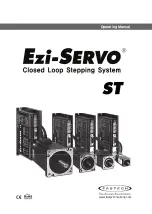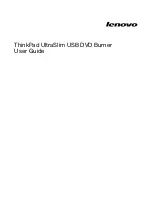
XPL
Copley Controls, 20 Dan Road, Canton, MA 02021, USA
Tel: 781-828-8090
Fax: 781-828-6547
Tech Support: E-mail: [email protected], Web:
http://www.copleycontrols.co
m
Page 24 of 28
RoHS
Xenus
Plus
CANopen
~
~
-
+
~
+
REGEN(-)
REGEN(+)
SHIELD
U
V
W
J2
DC BUS(+)
DC BUS(-)
J3
2350 µF
L1
MAINS
L3
L2
J1
PWM
STAGE
POWER
CONTROL
ISOLATION BARRIER
SHIELD
FEEDBACK
POWER &
DECODING
J10
CONTROL
LOGIC
+5 Vdc
ENABLE [IN1]
SIGNAL GND
CONTROL
SIGNAL
GROUND
CONTROL
SYSTEM
J8
GROUND
+24 Vdc
+24
VDC
BRAKE
+24 Vdc
J4
RTN
Cntrl
BRAKE
DC/DC
Converter
&
POWER
LOGIC
SIGNAL
DC/DC
(SAFETY GROUND)
PWM
INVERTER
MOTOR
FEEDBACK
CASE
FRAME GROUND
FRAME GROUND
20
40
60
80
100
120
140
160
260
240
220
200
180
160
140
120
100
Energy Absorption vs.
Mains Voltage
Mains Voltage (Vac)
Energy Absorption (W·s)
GROUNDING
A grounding system has three primary
functions: safety, voltage-reference, and
shielding. As a safety measure, the primary
ground at J1-3 will carry fault-currents from
the mains in the case of an internal failure
or short-circuit of electronic components.
Wiring to this is typically done with the
green conductor with yellow stripe using the
same gauge wire as that used for the mains.
The pin on the drive at J1-3 is longer than
the other pins on J1 giving it a first-make,
last-break action so that the drive chassis is
never ungrounded when the mains power is
connected. This wire is a ‘bonding’ conductor
that should connect to an earthed ground
point and must not pass through any circuit
interrupting devices.
All of the circuits on J1, J2, and J3 are mains-
connected and must never be grounded.
The
ground terminals at J1-3, J2-1, and J3-5 all
connect to the drive chassis and are isolated
from all drive internal circuits.
Signal grounding references the drive
control circuits to those of the control
system. These controls circuits typically
have their own earth connection at some
point. To eliminate ground-loops it is
recommended that the drive signal ground
be connected to the control system circuit
ground. When this is done the drive signal
voltages will be referenced to the same 0 V
level as the circuits in the control system.
Small currents flow between controller and
drive when inputs and outputs interact. The
signal ground is the path for these currents
to return to their power sources in both
controller and drive.
Shields on cables reduce emissions from the
drive for ce compliance and protect internal
circuits from interference due to external
sources of electrical noise. Because of their
smaller wire gauge, these should not be
used as part of a safety-ground system.
Motor cases can be safety-grounded either
at the motor, by earthing the frame, or by
a grounding conductor in the motor cable
that connects to J2-1. This cable should
be of the same gauge as the other motor
phase cables.
For CE compliance and operator safety,
the drive heatplate should be earthed to
the equipment frame. An unplated tab is
provided on the heatplate (near to J1) for
this connection.
DRIVE POWER SOURCES
An external +24 Vdc power supply is
required, and powers an internal DC/
DC converter that supplies all the control
voltages for drive operation. Use of an
external supply enables CAN communication
with the drive when the mains power has
been removed.
Power distribution in
XPL is divided into
three sections: +24 Vdc, signal, and high-
voltage. Each is isolated from the other and
all are isolated from the chassis.
EX24 VDC
The primary side of the DC/DC converter
operates directly from the external +24
Vdc supply and is isolated from other drive
power sections. The Brake output [OUT4]
operates in this section and is referenced
to the +24 Vdc return (0V). It sinks current
from an external load connected to the
ex24 Vdc power source.
INTERNAL SIGNAL POWER
The signal power section supplies power for
the control circuits as well as logic inputs
and outputs. Motor feedback signals such
as Halls, encoder, and temperature sensor
operate from this power source. All signal
circuits are referenced to signal ground. This
ground should connect to the control system
circuit ground or common so that drive and
controller inputs and output voltage levels
work properly with each other.
MAINS POWER
Mains power drives the high-voltage
section. It is rectified and capacitor-filtered
to produce +HV which the PWM stage
converts into voltages that drive either
three phase brushless or DC brush motors.
An internal solid-state switch together
with an external power resistor provides
dissipation during regeneration when the
mechanical energy of the motor is converted
back into electrical energy that must be
dissipated before it charges the internal
capacitors to an overvoltage condition. All
the circuits in this section are “hot”, that
is, they connect directly to the mains and
must be considered high-voltages and a
shock hazard requiring proper insulation
techniques during installation.
REGENERATION
The chart below shows the energy absorption
in W·s for a
Xenus Plus
drive operating at
some typical mains voltages. When the load
mechanical energy is greater than these
values an external regen resistor is available
as an accessory.





































